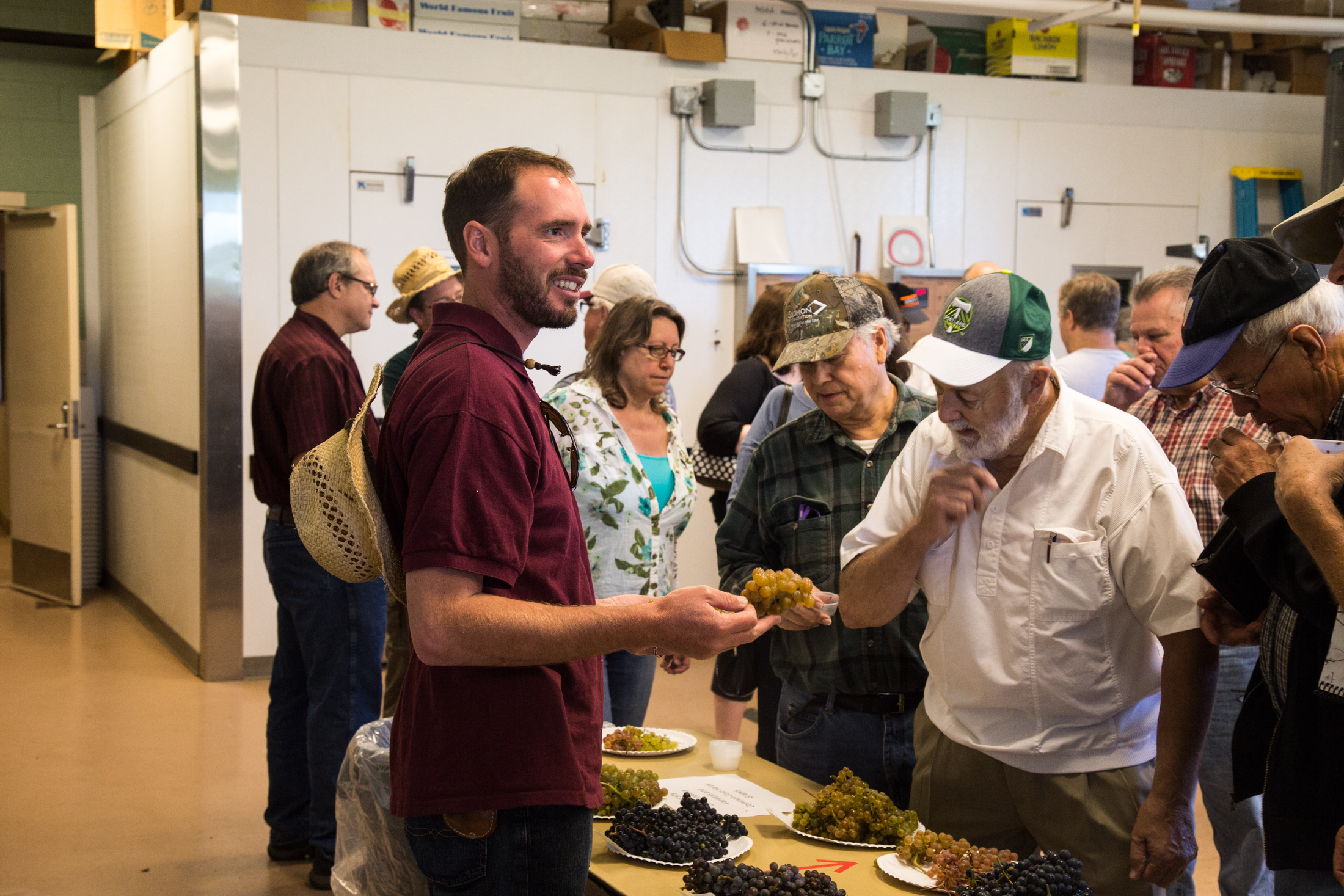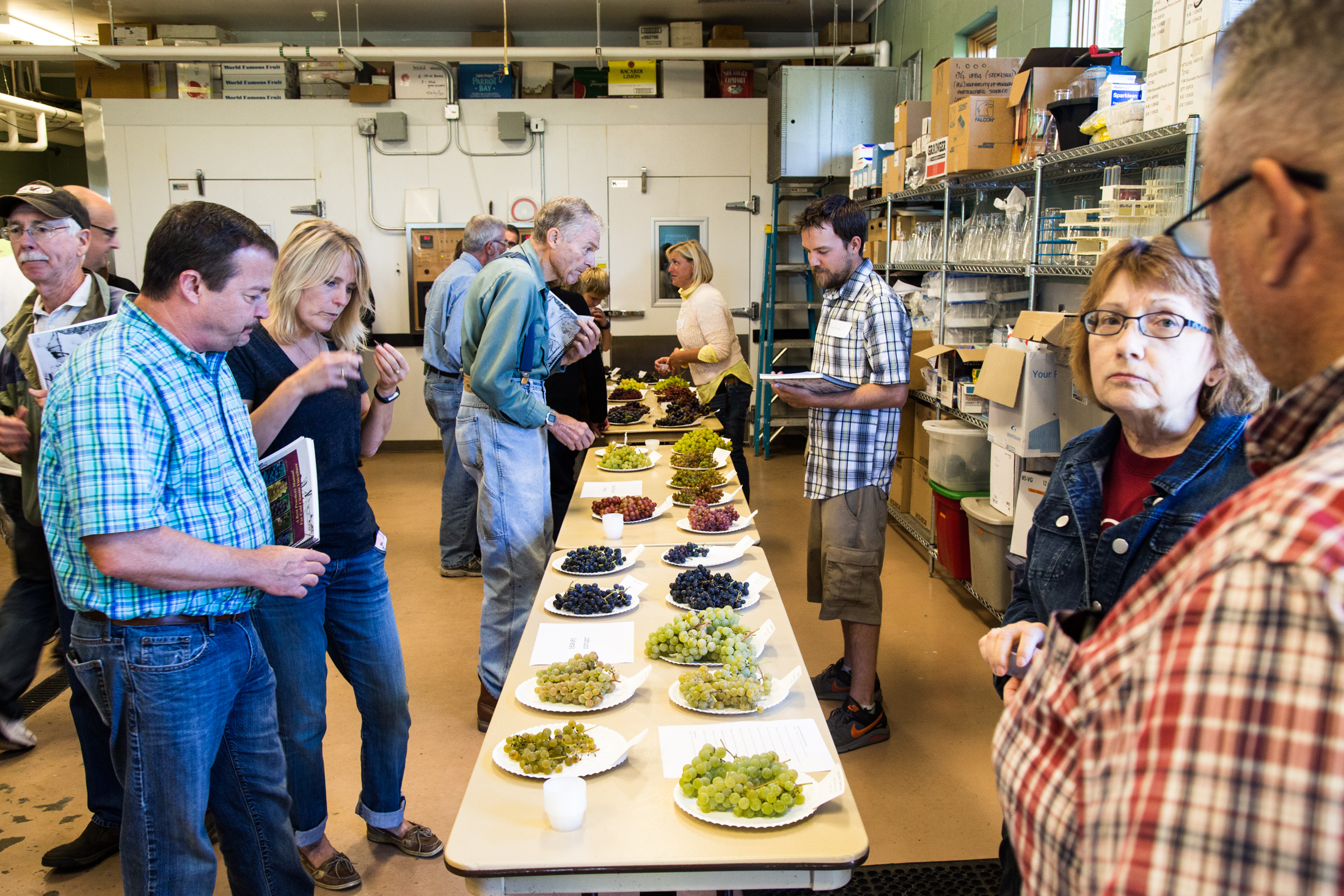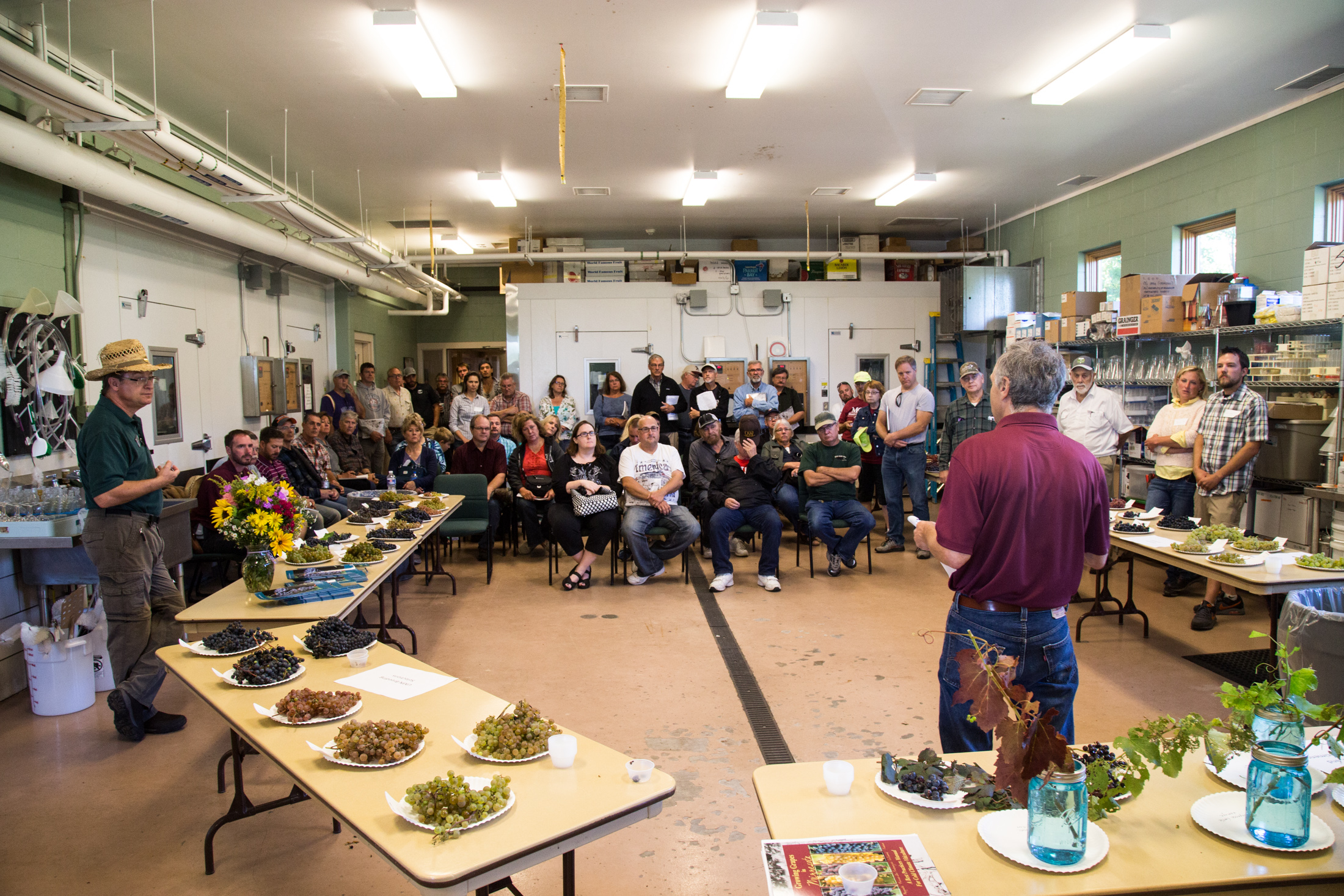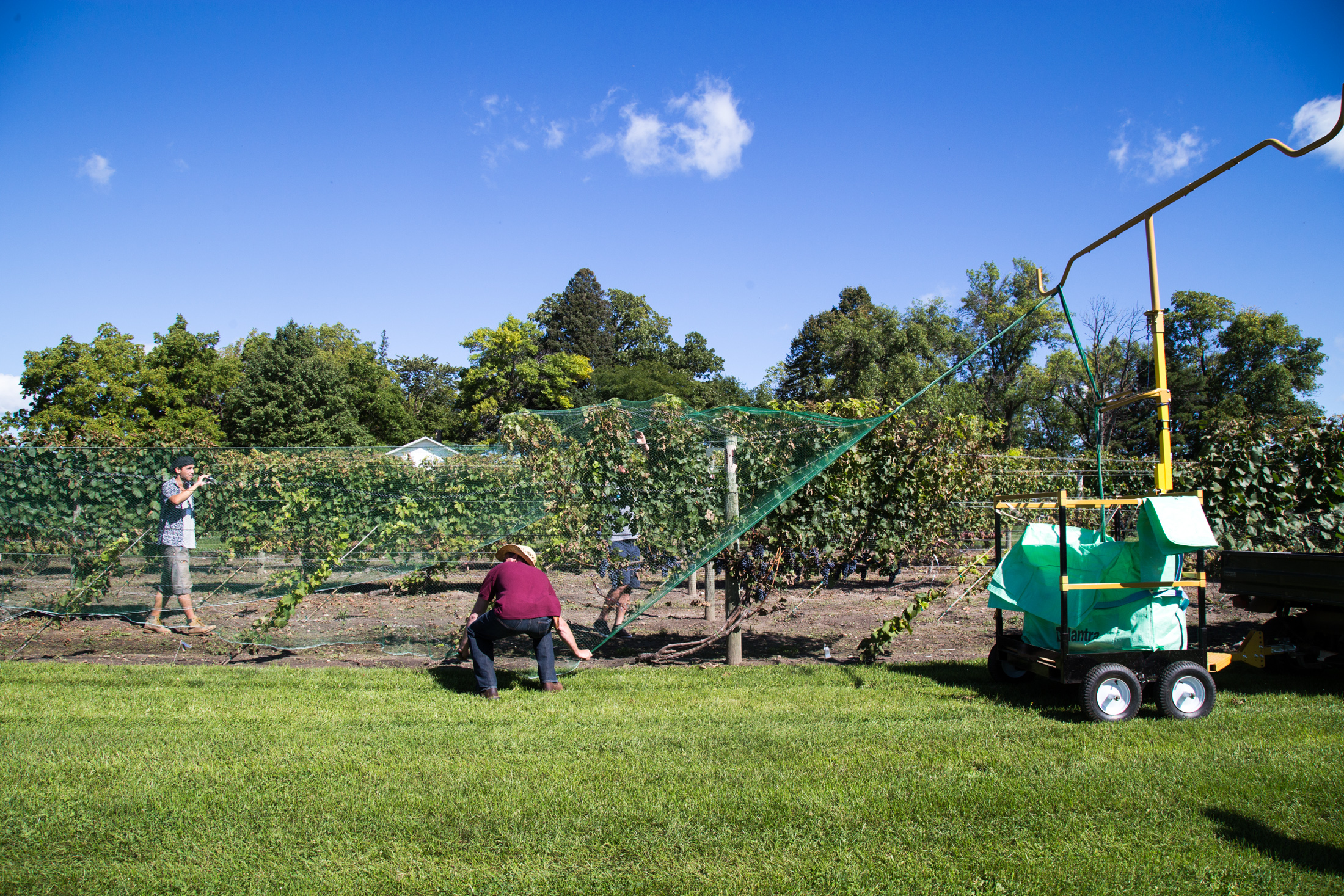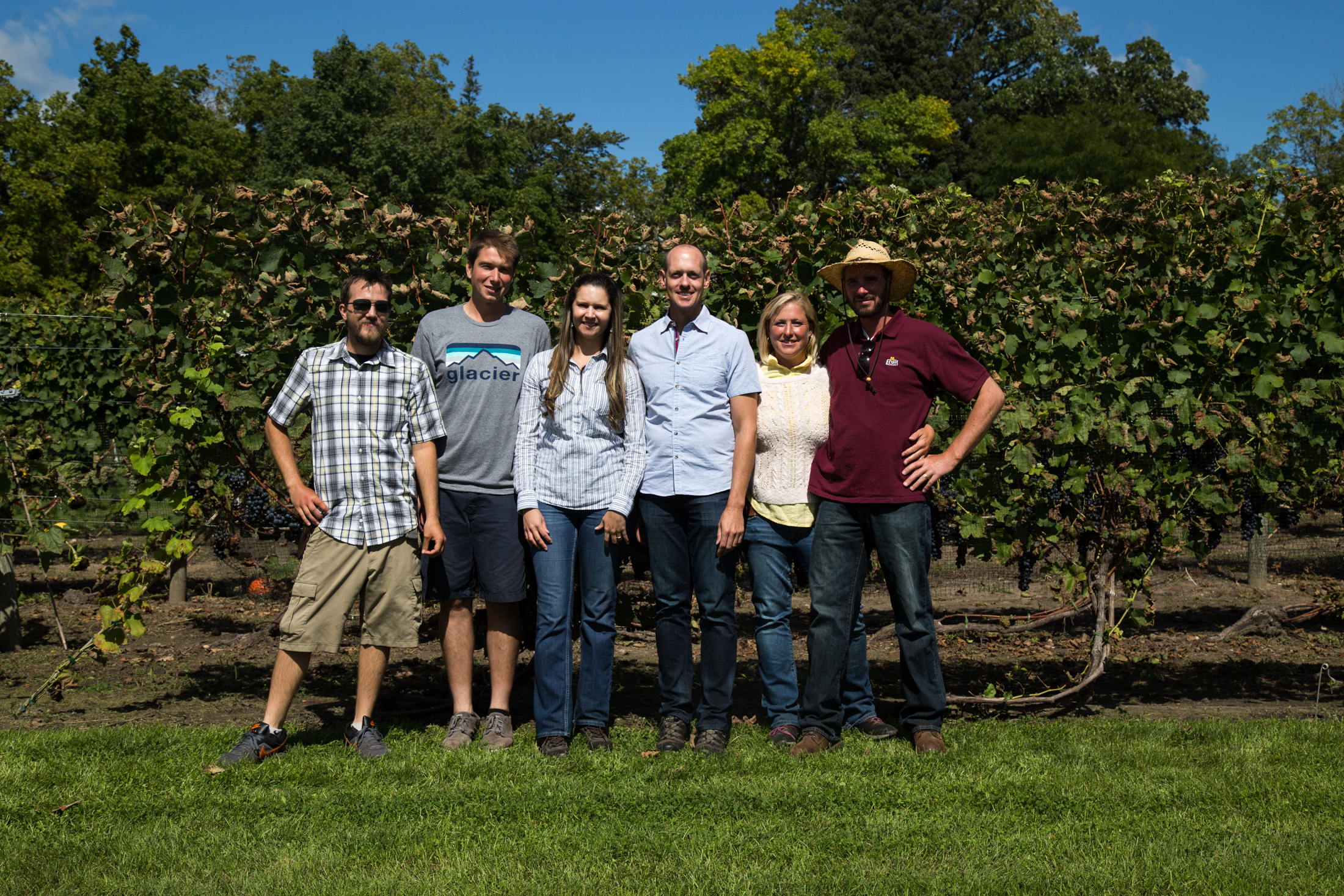Matthew Clark, Assistant Professor
About 65 people attended the annual Grape Fall Tour hosted on September 10 at the Horticultural Research Center. The 2 hour event included sampling grapes from the research vineyards, learning about insect and disease pests, demonstrations in the field, as well as a short lecture on soil nutrition as it relates to winemaking.
Attendees were welcomed at the registration table and given a new copy of “Growing Grapes in Minnesota”, which was hot off the press that morning. The updated manual published by the Minnesota Grape Growers Association is a modernized version of the best practices guide, complete with spiral binding, color images, updated tables, new content, and web resources.
The event started with a brief introduction of the staff and a review of the year’s events. Dr. Clark described research findings on wine making, genetic work for disease and insect resistance, the release of the ‘Itasca’ grape in 2016, and plans for the future which include additional focus on breeding table grapes.
An open grape tasting was held which allowed the attendees to try a curated collection of fruit grown at the HRC. Jenny and John Thull selected samples to reflect unique attributes of the fruit that are important in wine making and targets for the breeding program. This included Vitis vinifera samples that are familiar to wine drinkers worldwide. In addition there were high tannin varieties to help the tasters experience how the juice (and later the wine) interacts with the mouth. There were also samples of Vitis labrusca hybrids and cultivars, primarily from Elmer Swenson breeding material. Additional, a table we set with ‘muscat’ varieties, which have unique flavors and aromas that are different from the other hybrids and are often desirable in table and wine grapes. A selection of table grapes were often shown. Unfortunately, many of these do not perform well in Minnesota without protection or growing strategies to reduce winter injury (such as burying the vines). Of course, the common wine cultivars grown in Minnesota were available for tasting. Some new breeding selections were also on display.
Professor and Department Head, Carl Rosen, of the Dept. of Soil, Water, and Climate, gave a short lecture on vine nutrition and its effects on wine and juice. This was a brief report at the conclusion of the Northern Grapes Project (northerngrapesproject.org).
The HRC staff demonstrated new bird netting equipment that was donated by Plantra which allows for easy over-the-vine netting to be deployed with three laborers. The pull-behind device uses a reusable, soft knit net called AviGard® Flex™ Diamond Mesh Net. Also on display were bins and other equipment from MDT and Associates. Finally, the attendees were able to walk through some of the vineyards and see young plantings of ‘Itasca’ and ‘Marquette’ grown in VSP.
